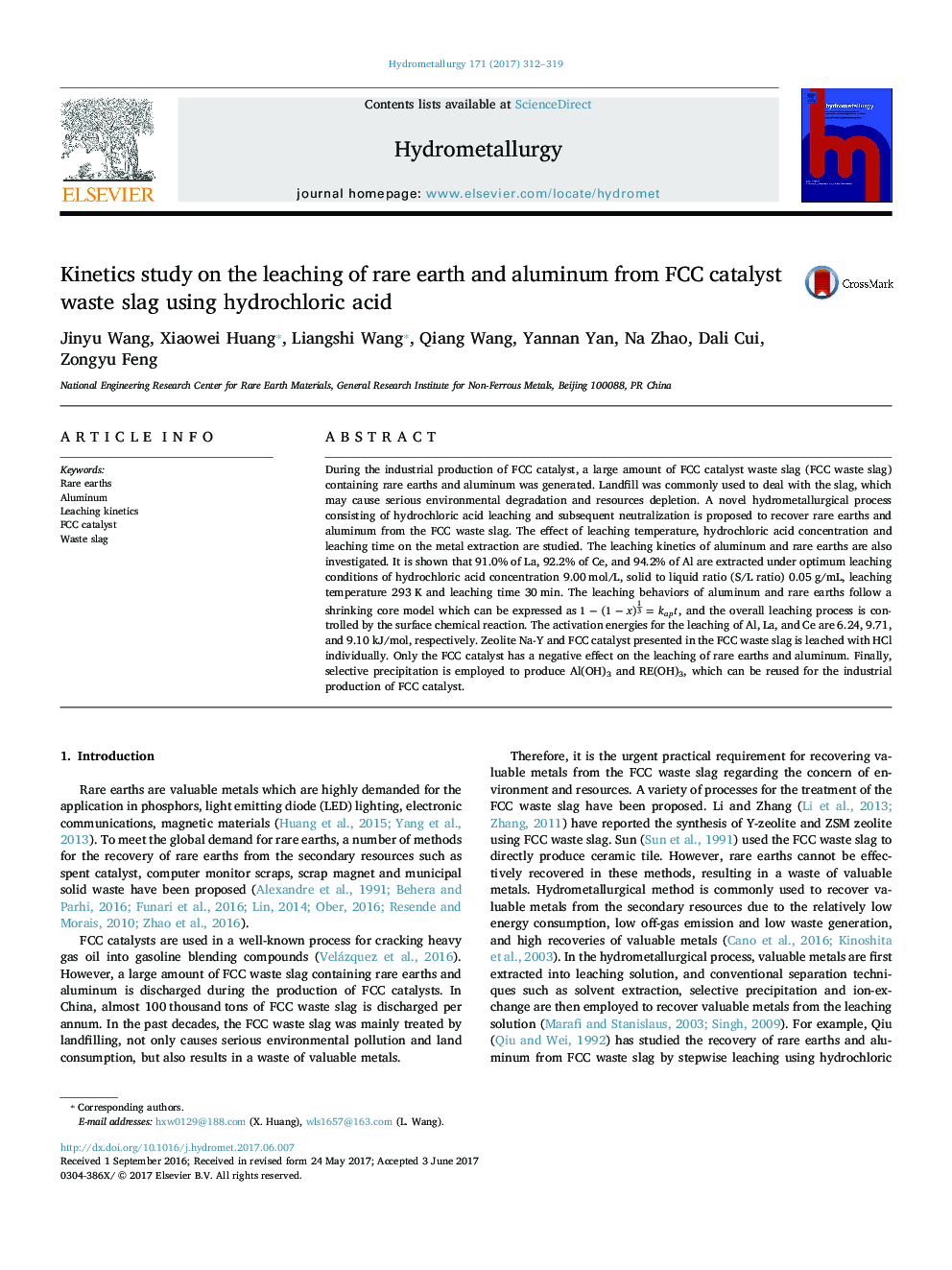| Article ID | Journal | Published Year | Pages | File Type |
|---|---|---|---|---|
| 4769292 | Hydrometallurgy | 2017 | 8 Pages |
Abstract
During the industrial production of FCC catalyst, a large amount of FCC catalyst waste slag (FCC waste slag) containing rare earths and aluminum was generated. Landfill was commonly used to deal with the slag, which may cause serious environmental degradation and resources depletion. A novel hydrometallurgical process consisting of hydrochloric acid leaching and subsequent neutralization is proposed to recover rare earths and aluminum from the FCC waste slag. The effect of leaching temperature, hydrochloric acid concentration and leaching time on the metal extraction are studied. The leaching kinetics of aluminum and rare earths are also investigated. It is shown that 91.0% of La, 92.2% of Ce, and 94.2% of Al are extracted under optimum leaching conditions of hydrochloric acid concentration 9.00Â mol/L, solid to liquid ratio (S/L ratio) 0.05Â g/mL, leaching temperature 293Â K and leaching time 30Â min. The leaching behaviors of aluminum and rare earths follow a shrinking core model which can be expressed as 1â1âx13=kapt, and the overall leaching process is controlled by the surface chemical reaction. The activation energies for the leaching of Al, La, and Ce are 6.24, 9.71, and 9.10Â kJ/mol, respectively. Zeolite Na-Y and FCC catalyst presented in the FCC waste slag is leached with HCl individually. Only the FCC catalyst has a negative effect on the leaching of rare earths and aluminum. Finally, selective precipitation is employed to produce Al(OH)3 and RE(OH)3, which can be reused for the industrial production of FCC catalyst.
Related Topics
Physical Sciences and Engineering
Chemical Engineering
Chemical Engineering (General)
Authors
Jinyu Wang, Xiaowei Huang, Liangshi Wang, Qiang Wang, Yannan Yan, Na Zhao, Dali Cui, Zongyu Feng,
